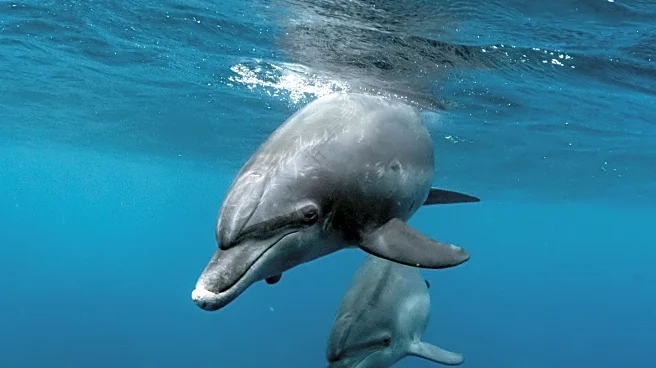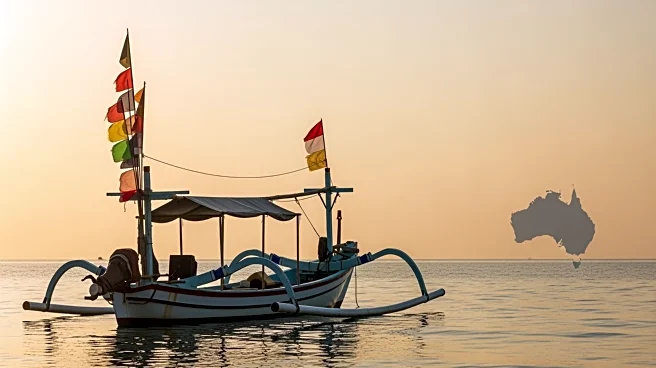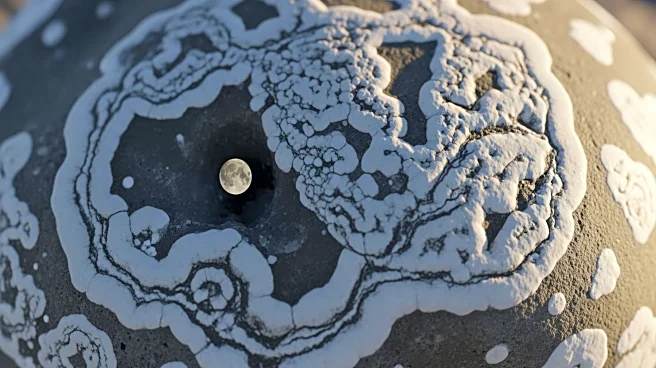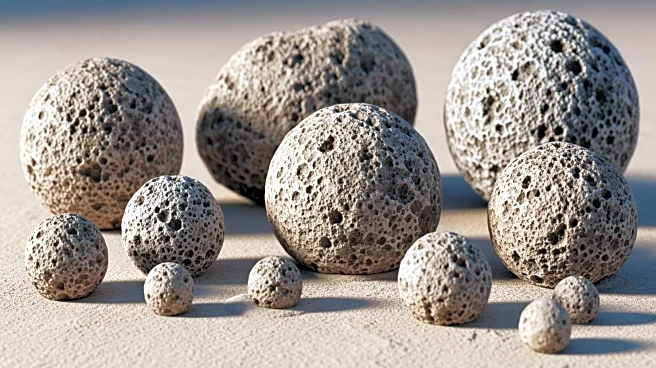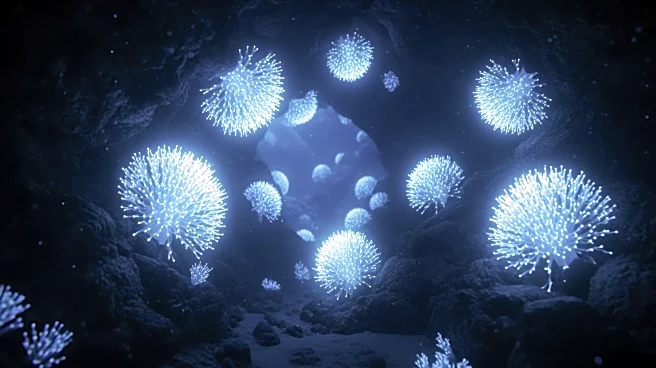What's Happening?
Australian humpback dolphins have been observed using sea sponges as hats in a unique mating ritual aimed at attracting females. This behavior was documented by scientists from the Department of Biodiversity,
Conservation and Attractions (DBCA) off the coast of Burrup Peninsula in Western Australia. The dolphins wear the sponges on their heads as a form of offering, similar to presenting flowers. This peculiar behavior has been noted in specific areas along the Western Australia coast, including the Dampier Archipelago and Exmouth Gulf. The dolphins, recognized as a distinct species in 2014, are classified as 'vulnerable' with fewer than 10,000 adults estimated to exist.
Why It's Important?
The discovery of this unique behavior highlights the complex social interactions and mating strategies of humpback dolphins. Understanding these behaviors is crucial for conservation efforts, as it provides insight into the species' needs and challenges. Habitat loss and degradation, primarily due to industrial activities, pose significant threats to these dolphins. By studying their mating rituals, researchers can better advocate for protective measures and habitat preservation, ensuring the survival of this vulnerable species.
What's Next?
Further research is needed to explore the full extent and significance of this behavior. Scientists may investigate whether similar rituals exist in other dolphin populations or if this is unique to the Australian humpback dolphins. Conservationists could use this information to develop targeted strategies to protect the dolphins' habitats from industrial encroachment. Public awareness campaigns may also be launched to highlight the importance of preserving marine biodiversity and the unique behaviors of these dolphins.
Beyond the Headlines
The use of sea sponges as mating offerings underscores the intelligence and adaptability of marine mammals. This behavior may reflect broader ecological interactions and the impact of environmental changes on animal behavior. As industrial activities continue to threaten marine habitats, understanding and preserving these unique behaviors becomes increasingly important for maintaining ecological balance.


